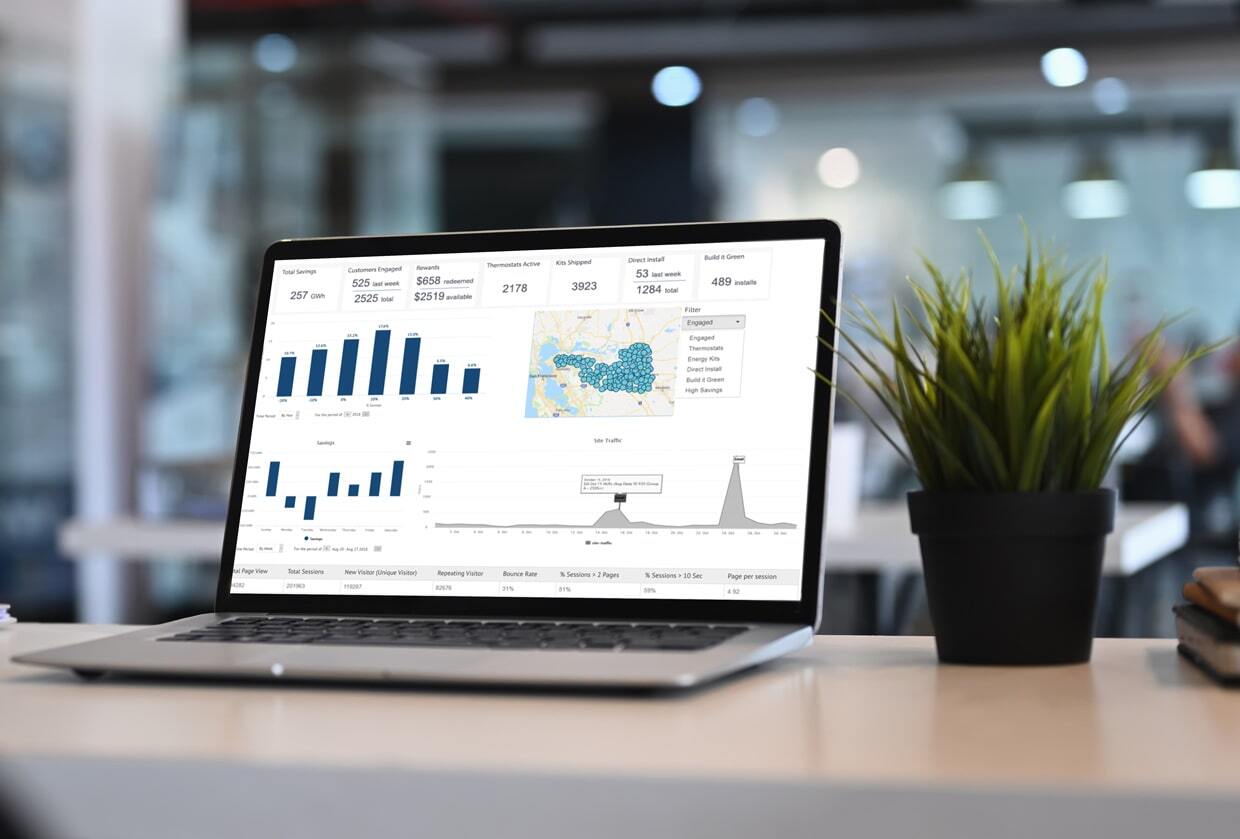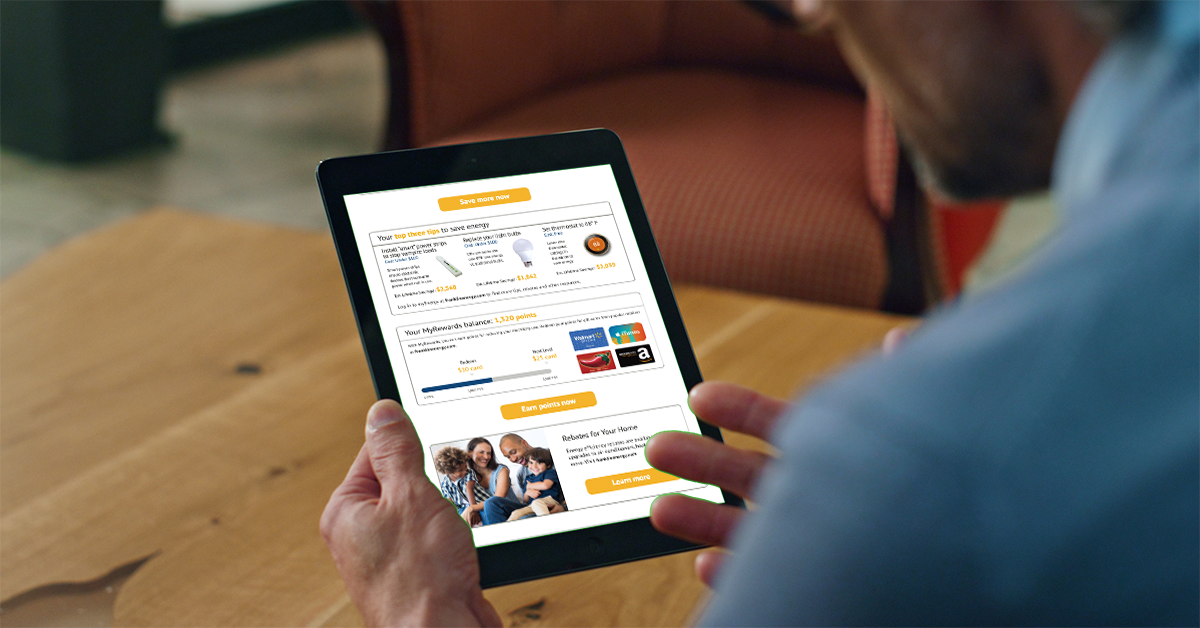Reflections on the Newly Released IRA Home Rebate Program Guidance from a State Energy Office Alumna
August 7, 2023 •Alyssa Latuchie

While lots of my colleagues can boast long tenures at Franklin Energy, I cannot. In November of 2022, I moved over to Franklin Energy from the New Mexico Energy, Minerals, and Natural Resources Department (the de-facto State Energy Office). While my path to the NM SEO might have been unconventional (including going back to grad school mid-career and having to re-learn calculus as an adult – ouch), my desire to make an impact and help drive a clean energy economy never faltered.
When the Infrastructure Investment and Jobs Act (IIJA) became law in November of 2021, the opportunity was enormous. I remember looking through the different provisions to see which programs we wanted to target as a state. But even small competitive federal grants are a large undertaking, especially for State Energy Offices (SEOs) that are typically under-resourced. Determining which, if any, of the opportunities we would be pursuing was a daunting task. .png?width=400&height=267&name=Franklin%20Social%20Graphics%20(21).png) Once we tacked on the work associated with a competitive grant on top of the work that is required to apply for the formula funds, it became clear that the capacity to apply for and then actually do the work of these grants was just not feasible on a large scale. And due to resource constraints, a lot of states decided to go after the formula funds, but not the competitive grants.
Once we tacked on the work associated with a competitive grant on top of the work that is required to apply for the formula funds, it became clear that the capacity to apply for and then actually do the work of these grants was just not feasible on a large scale. And due to resource constraints, a lot of states decided to go after the formula funds, but not the competitive grants.
When the Inflation Reduction Act (IRA) passed in August of 2022, the NM SEO in Santa Fe was abuzz. There were so many exciting pieces to the bill, but the “how” in terms of implementation was daunting and overwhelming, as our office had not administered programs like these in the past. After I moved to my role of Director of Market Development for Federal and State Programs at Franklin Energy, I was in a lot of the same conversations but on the other side of the table, now able to help SEOs solve problems and research solutions that Franklin Energy has been executing for the last 30 years.
Over the last many months, I have had the opportunity to crisscross the country and hear from an impressive group of leaders in State Energy Offices across the nation. Hearing them talk about everything under their purview is beyond impressive. The passion they feel for the work they are doing and the impact they are making is palpable. Even though most of these energy offices are very small in terms of workforce, their scope of responsibilities is massive and ever-changing—especially with the onset of the IIJA and the IRA.
For almost a year, we have been talking with states and the Department of Energy (DOE) to help prepare for the release of guidelines for $9 billion in Home Energy Rebate Programs. And on July 27, 2023, DOE released their guidance. It is clear they listened to industry stakeholders when crafting this guidance, and for that we are so appreciative. By putting equity at the forefront of these programs and focusing on data-driven energy savings, the administration put their money where their mouth is. As a result, we now have the historic opportunity to help stand up these programs. But first, states must apply.
After my first read-through of the guidelines, my thoughts were, “Wow, DOE was really thorough,” and “Wow, the application process for states is a doozie.” The application and the subsequent “Implementation Blueprint” .png?width=400&height=267&name=Franklin%20Social%20Graphics%20(23).png) (which states will need to submit 60 days prior to standing up a program) is a HUGE undertaking, especially for a SEO who is already under-resourced and dealing with additional grants and applications around the other programs from the IIJA and the IRA. The checklist for both programs comes out to 23 pages long itself!
(which states will need to submit 60 days prior to standing up a program) is a HUGE undertaking, especially for a SEO who is already under-resourced and dealing with additional grants and applications around the other programs from the IIJA and the IRA. The checklist for both programs comes out to 23 pages long itself!
Here is a recommendation for my new private-sector energy efficiency colleagues: I know that as an industry, the initial reaction to the guidelines dropping was “LFG!” but I think it is important that we keep in our collective minds what “going” actually entails. We as an industry are eager to stand up programs and show how impactful and successful they can be, but I think the first thing we need to do collectively is show support to our SEO compatriots. Rather than pressuring them to “LFG!” we need to lend a hand and offer to provide resources or support that can help. As a former SEO employee, I know firsthand how important it is to be impartial. We need to remember that impartiality when offering help, but there are ways to support SEOs. Consider these options:
- Check in. See how they are doing. Don’t only ask about the IRA; check in on other priorities as well.
- Get the right people at the table. If SEOs need to get into the weeds on a question, make sure you bring the right people to the conversation; sales and business development folks are not always the right people to answer the questions at hand. Additionally, bring in other trusted industry allies. Building meaningful industry connections can help foster collaboration and problem-solving.
- Align expectations. Even if a state intends on moving quickly, we need to understand the true pace of getting these applications through DOE. It is very unlikely to be truly “quick.”
- Work with DOE on recommendations. DOE mentioned they are working on providing recommendations for states that might need a bit more assistance in standing up these programs. The industry can help speed this process along by figuring out the best ways to provide input.
SEOs have been drinking from a firehose for a long time now, and the IRA is just a piece of that. The industry needs to show unwavering support to these dedicated but overworked state energy officials so that public and private sectors can work together as true partners. Once we accomplish that, we can help successfully usher in these historic programs and drive lasting change for a more sustainable future.

.png)
.png)


.png)
